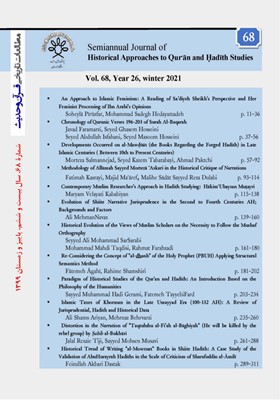Historical Trend of Writing "al-Mowzuat" Books in Shiite Hadith: A Case Study of the Validation of AbuHurayrah Hadiths in the Scale of Criticism of Sharafuddin al-Āmilī
Subject Areas : -
1 - Assistant Professor, Department of Quran and Hadith, Karaj Branch, Islamic Azad University, Karaj, Tehran.
Keywords: Criticism, Abu Hurayrah, Forged Hadith, Allama Sharafuddin Ameli, The Cognition Methodology,
Abstract :
Tradition, as the second brilliant source of Islamic theology during its existance, has always been exposed to serious and dangerous harms and threats, the main root of which should be its various and effective and unique capacities and functions in explaining and modernizing the basic knowledge of Islam in the fields of insight, value, and action. According to history, the approach of the phenomenon of fabricating and forging hadiths should be considered as one of the most important and damaging harms to the body of Islamic hadiths, in which some people, intentionally and with the motive of distorting and intentionally damaging religious foundations, fabricate hadith. The hadith scholars of the two Islamic sects, in different periods, by defining several methods and criteria, criticized and refined the documents and texts of the narrations, and extracted and purified the hadiths of the subject on their agenda, including Allama Sheikh Sharafuddin Ameli, who wrote the book. Abu Hurayrah, with a scholarly, innovative and non-biased approach, and has criticized the Isnads and texts of a number of selected Abu Hurayrah narrations by applying the seven criteria of Quran, Sunnah, authentic hadiths, intellect, history, science and natural laws as well as the problems within the text, He has proved the falsity of all of his narrations. The present article seeks to explain the methods and criteria of Allama Sharafuddin Ameli in criticizing the hadiths of Abu Hurayrah in the above-mentioned book.
_||_


